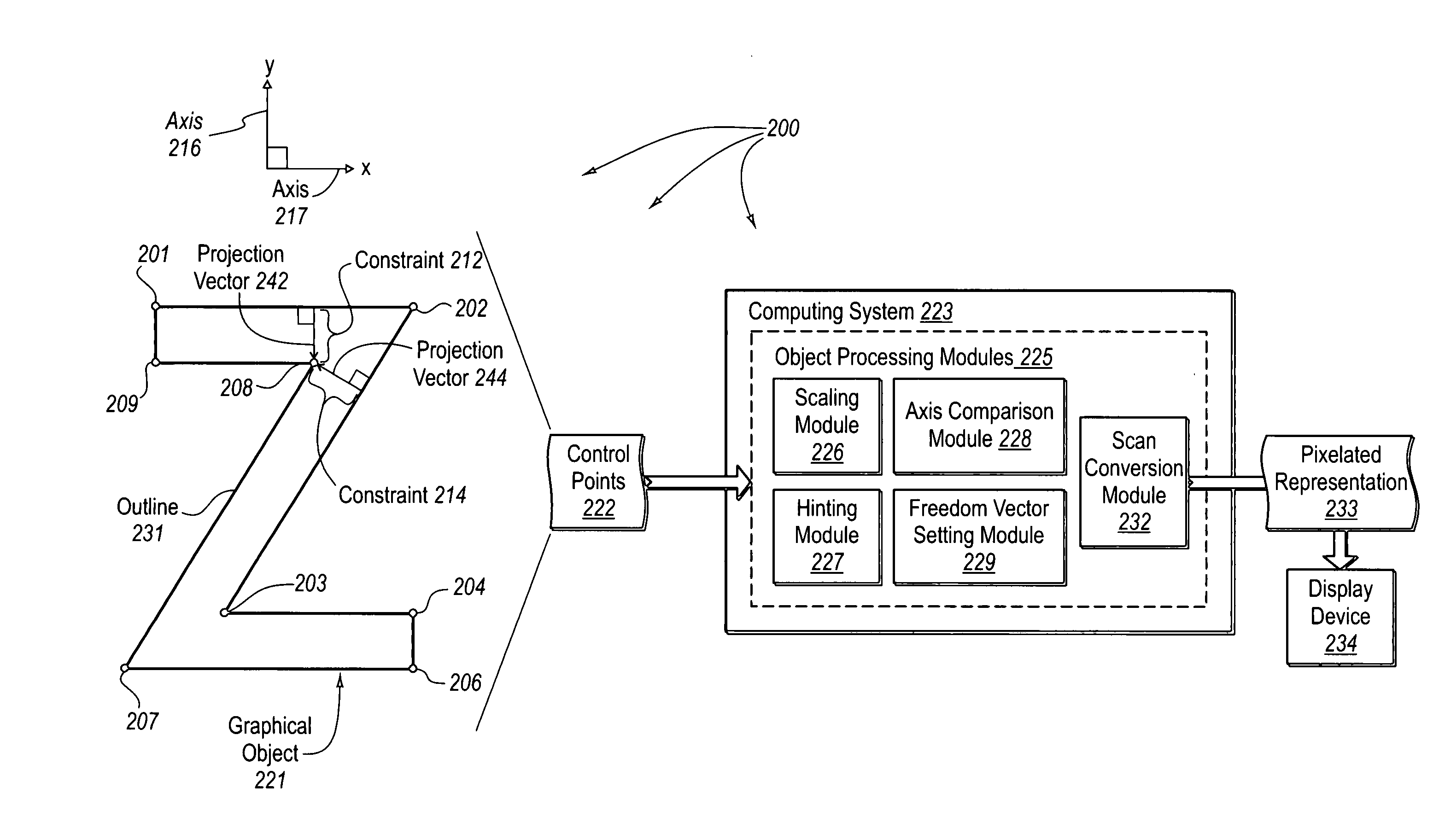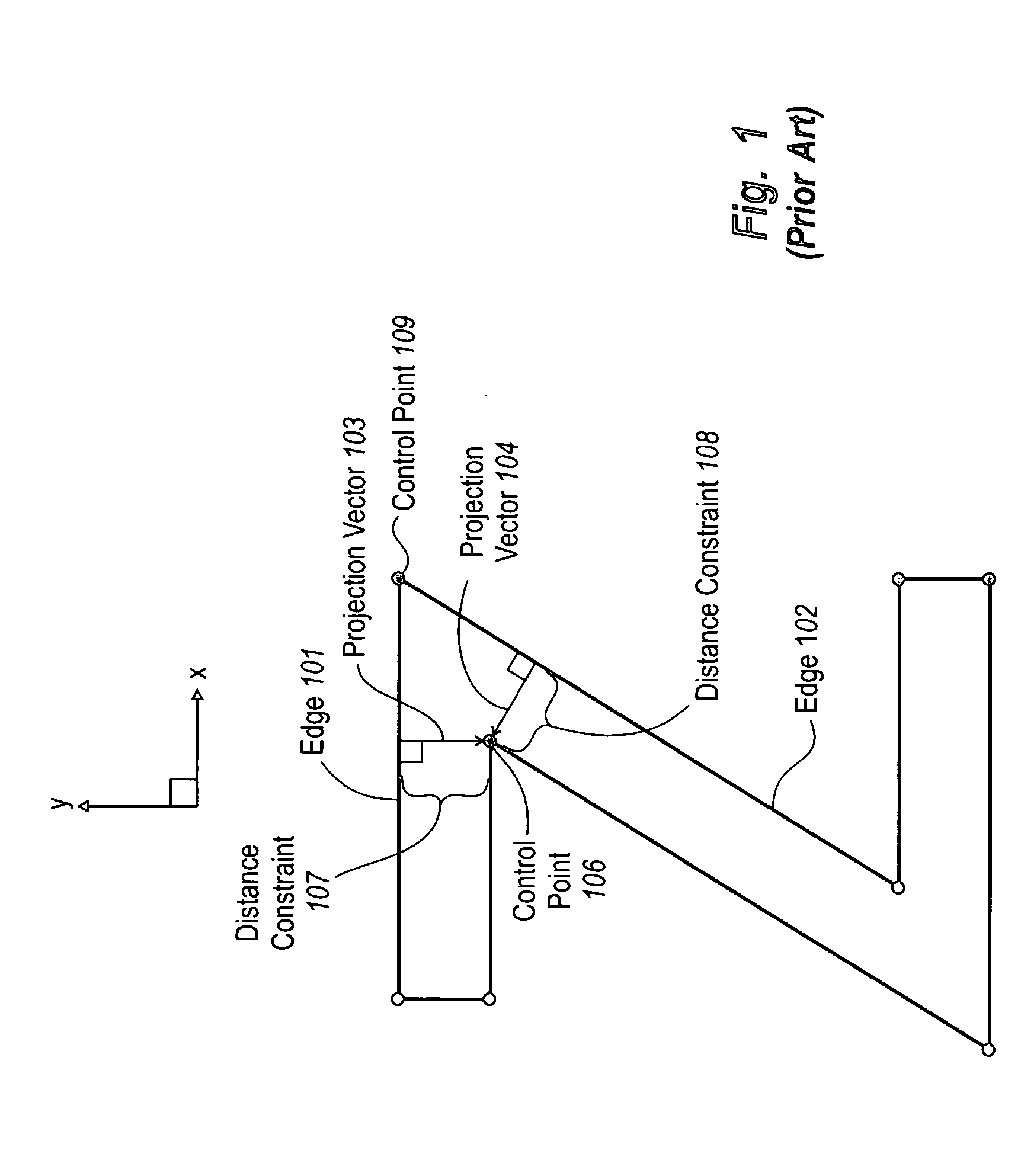Dynamically determining directions of freedom for control points used to represent graphical objects
a control point and freedom technology, applied in the direction of instruments, computing, drawing from basic elements, etc., can solve the problems of consuming significant computing system resources, storing characters as bitmaps (either fixed or proportional), and a large number of bitmaps by hand is extremely time-consuming, so as to reduce the likelihood of causing
- Summary
- Abstract
- Description
- Claims
- Application Information
AI Technical Summary
Benefits of technology
Problems solved by technology
Method used
Image
Examples
Embodiment Construction
[0032] The principles of the present invention relate to systems, methods, and computer program products for dynamically determining directions of freedom for control points used to represent graphical objects such as text. A computer system receives a set control points (e.g., containing control point locations and computer-executable instructions defining constraints on the control points). The computer system identifies a first projection vector corresponding to a first constraint for a control point (e.g., from contained computer-executable instructions). The computer system determines which of two perpendicular axes (e.g., an X axis and Y axis that is perpendicular to the X axis) is closer to the first projection vector. The computer system sets the direction of a first freedom vector (indicating a direction the control point can move to comply with the first constraint) in the direction of the closer axis.
[0033] When the control point is to comply with a plurality of constrai...
PUM
 Login to View More
Login to View More Abstract
Description
Claims
Application Information
 Login to View More
Login to View More - R&D
- Intellectual Property
- Life Sciences
- Materials
- Tech Scout
- Unparalleled Data Quality
- Higher Quality Content
- 60% Fewer Hallucinations
Browse by: Latest US Patents, China's latest patents, Technical Efficacy Thesaurus, Application Domain, Technology Topic, Popular Technical Reports.
© 2025 PatSnap. All rights reserved.Legal|Privacy policy|Modern Slavery Act Transparency Statement|Sitemap|About US| Contact US: help@patsnap.com



